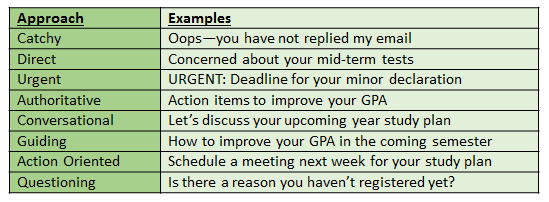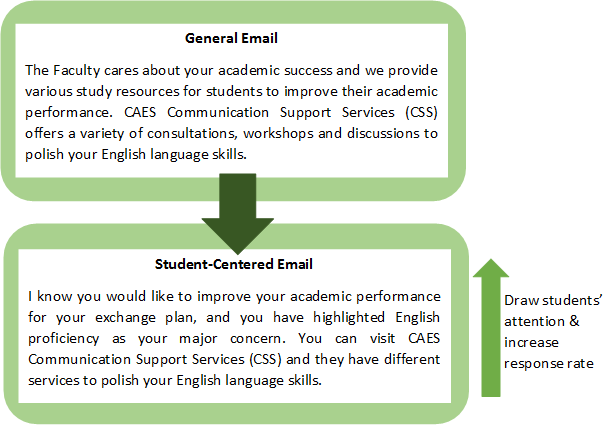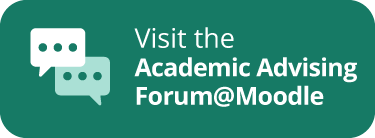How to draft an effective advising email?
The email should include an impressive subject line, student-centered and student-friendly content, and 1-2 call-to-action item(s). (Education Advisory Board, 2017; Leek, 2016). You are adding values and connecting with your students in your advising email, rather than providing policy and guideline to them (Ohrablo, 2018; Grites, Miller & Voler, 2016; Leek, 2016). Below are some tips.
Start with an impressive subject line
- You can adopt one of the approaches from EAB’s Eight Effective Approaches (2017) based on your need.
- You can include your student’s name in the subject line, and let the student know it is not a spam email.
Prepare a student-centered and student-friendly content
- The email content and tone should focus on your students’ current academic status and their goals, not rules and policies. For example
- A 150-200 words email is the most readable length for students. If you would like to give more advice to the students, you can highlight the most urgent issue and invite them to visit you in your office hours.
- You can use more “I” sentence and write your content in the “active voice”. These can make your message more personal.
- You should beware of the usage of “jargons” especially for new students, e.g. “double-counted courses ”, “prerequisite”. You can translate them to readable phrases, e.g. “courses that are allowed to fulfill overlapping requirements”, “require to study in advance”.
Include one to two call-to-action item(s) in your email
- Your call-to-action item should align with your subject line, and the students will know what they have to follow-up immediately.
- You can make use of action verbs that will create a sense of urgency to the students, e.g. “reply”, “submit”, “complete”, etc.
- You can propose the timeline and/or deadline for the call-to-action items, and highlight and bold the date to draw students’ attention.
After advising your students through email, you can record your effort easily in Student Information System. For further instruction, please refer to “How to record my advising email?“.
References:
Education Advisory Board (2017). Breaking Through the Student Communications Barrier. Retrieved from https://eab.com/technology/on-demand-webconference/student-success/breaking-through-the-student-communications-barrier-for-frontline-staff-2/
Grites, T. J., Miller, M. A., & Voler, J. G. (2016). Beyond foundations: Developing as a master academic advisor. Hoboken, NJ: John Wiley & Sons, Inc.
Leek, D. (2016). Using Email for Appreciative Advising. Fall Academic Advising Conference. Holland, MI.
Ohrablo, S. (2018). High-impact advising: A guide for academic advisors. Denver, CO: Academic Impressions.






